11 Jul Emma: From North to South Country
 These past two weeks have been anything but ordinary for the Misener crew. As I told you in a previous post, Mom, Dan and I took a trip north to Gregory, S.D. We brought one combine, two grain trailers and the cargo trailer with us while David, Verena and the guys headed home to Elk City, Okla., to take care of some odds and ends.
These past two weeks have been anything but ordinary for the Misener crew. As I told you in a previous post, Mom, Dan and I took a trip north to Gregory, S.D. We brought one combine, two grain trailers and the cargo trailer with us while David, Verena and the guys headed home to Elk City, Okla., to take care of some odds and ends.
Here are some photos of that journey and as you can see, the road is quite different between 600 miles.
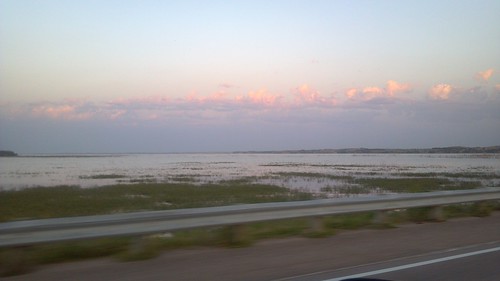
This was taken in central Nebraska. This specific part of the country usually just has a stream running through it, not what you see here as it is completely flooded.

This was taken in northern Nebraska, more water. A far cry from Oklahoma.
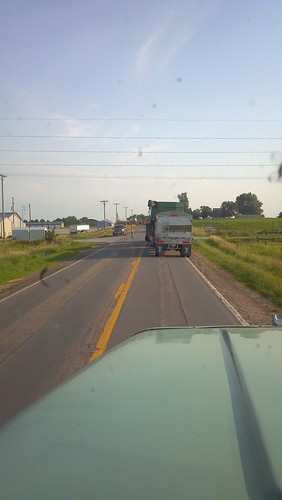
Harvesters are not the only ones with summer jobs. Construction is a usual sight we see along the roads. Although it may be annoying at the time, I’m grateful to have good roads to drive on.
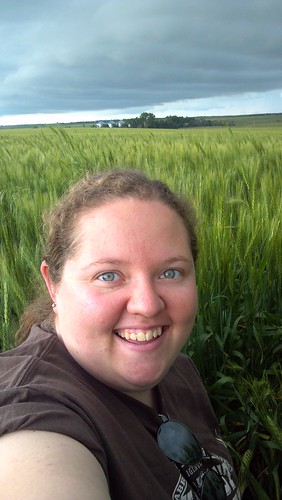
Green wheat! As you can see this wheat is grass green, but looks to be promising!

This is an awesome landscape picture if I may so say myself. The very left side, you’re looking directly south, as you look to the right, you’re looking straight west, then eventually looking directly north on the right side!
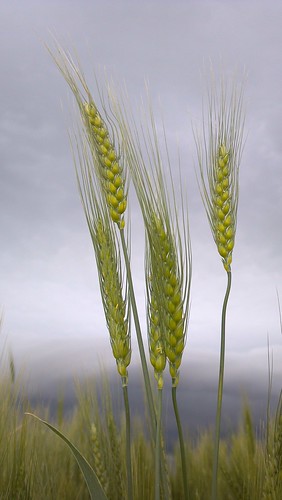
Here’s a close-up of the wheat in Gregory. My estimate is the wheat head is around four inches, not including the beard.
After parking our loads we left to take a look around the Gregory area to see what the wheat looked like in the surrounding area. We’ve found that there is not near the amount of acres of wheat planted this year. The extreme wet conditions this year prevented farmers to plant their fields.
On a good note, the wheat that is planted looks great. We drove northwest of Gregory to the Missouri River, here are some photos of the flooding in South Dakota.

This is as full as I’ve ever seen the Missouri River in this particular area.
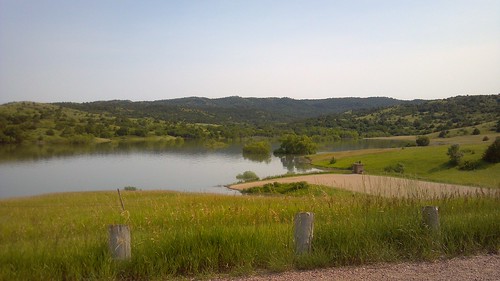
You can see the trees are now almost covered.

We returned to Gregory to find that it was raining. I wasn’t sad to see it.

Little Elizabeth playing in the rain. I joined her just after i snapped this shot. 😉
We spent the night in Gregory, then headed back home to Elk City, Oklahoma to help David, Joel and Thad do some odds and ends. I’m still amazed to see the differences within 600 miles. Take a look at what a river bed in Oklahoma looks like today.
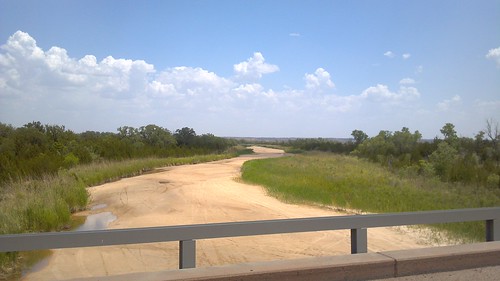
Completely dry. What a toll this drought has taken.
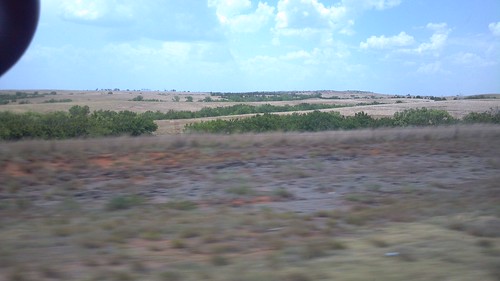
As you look out across the Oklahoma landscape, the grass has literally gone dormant and completely brown. What trees have not burned up, are on the verge of dying. Bottom line is Oklahoma needs water. We still have not mowed our lawn where we live.
This drought situation not only is effecting grain farmers, but also cattle farmers. Just the other day I was reading an article about a father/son farm where they had to sell out because of this situation. With dead pastures, no water, and a lack of rain to grow alfalfa cattle farmers are in a tough spot. The son in the article said that this drought won’t only determine this year’s fate, but years to come. He went on to say that he and his father had worked decades building a herd – one you just can’t replace.
I can’t imagine what a hardship this is for them and my heart goes out to them, and all of those dealing with this drought. I can only offer words of encouragement and say keep your chin up and rain will come eventually. Meanwhile we have them all in our thoughts and prayers.
Be safe and God bless!
Emma can be reached at emma@allaboardharvest.com. All Aboard 2011 is sponsored by High Plains Journal and DuPont Crop Protection.


Sorry, the comment form is closed at this time.